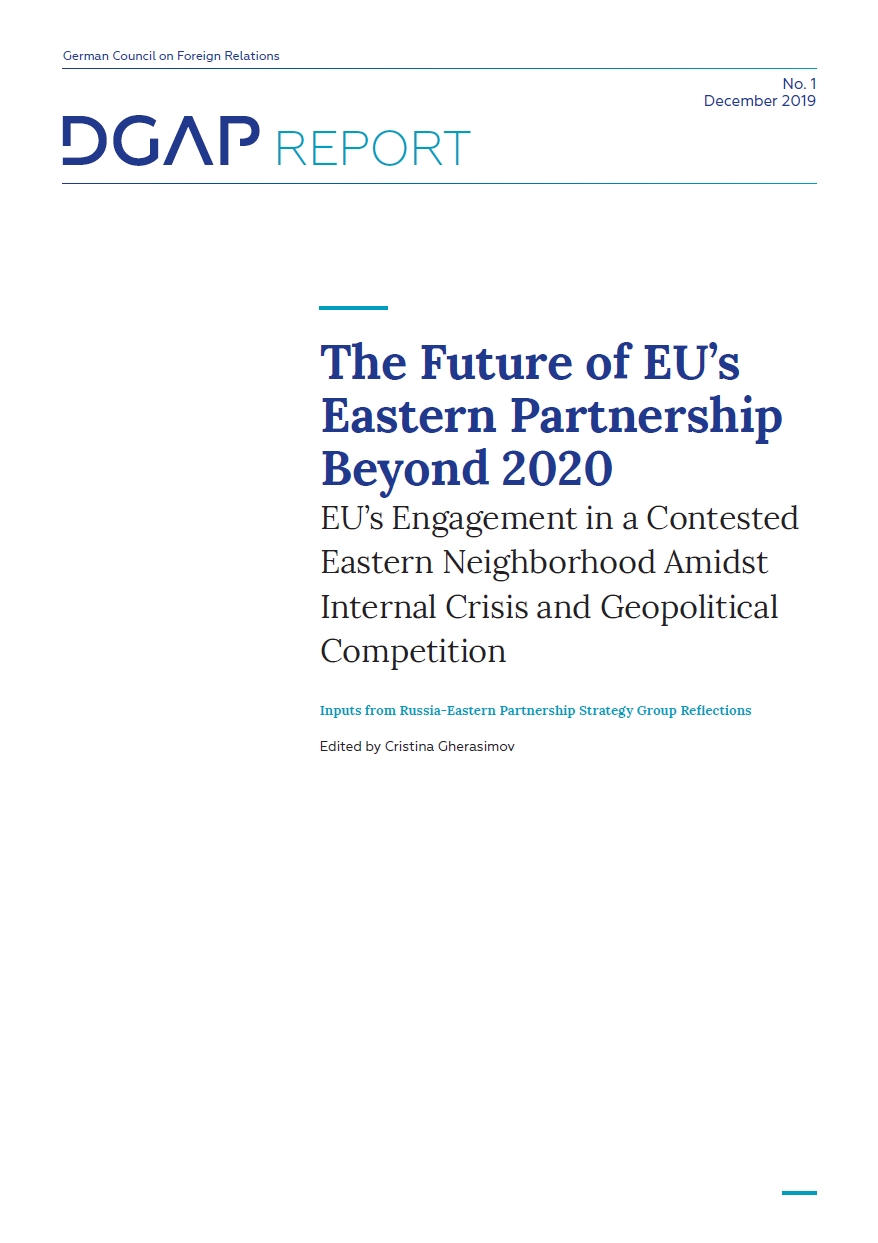Introduction
The year 2019 has marked the ten-year anniversary of the EU’s Eastern Partnership (EaP) and seen the start of the development of a new strategy for the EaP, which is to be announced by mid-2020. A new European Commission took office on December 1, and according to its president, Ursula von der Leyen, “the European Union’s future is shaped and tied in with the future of its neighbors and its partners. A stable, secure and prosperous region around our Union is therefore of paramount importance. The EU should be present and active across our neighborhood, cooperating on common challenges and opportunities and providing support for essential reforms.” In her mission letter to Commissioner for Neighborhood and Enlargement Olivér Várhelyi, von der Leyen asked him to “take the Eastern Partnership to the next level” by proposing a new set of long-term policy objectives for the EaP.
The changing domestic and geopolitical environment of the last ten years, and its effects on the EaP countries and the EU member states make this a challenging task. Zigzagging sociopolitical and economic developments in the EaP countries, the capacity to act of the EU (and of Germany, a particularly important player in the region), and the rising influence of third powers in the region are among the main factors that have profoundly changed the nature of the relationship between the EU and its neighborhood. The changing context therefore needs to be considered in the design of the next set of policy objectives and instruments. The EU and its member states, however, lack a clear strategy and a political vision for how to further engage with the eastern neighborhood. This report analyzes these factors that the EU should consider when engaging with the EaP countries in times of crisis and external pressure beyond 2020.
In the opening chapter Sergiy Gerasymchuk, head of the South-Eastern Europe studies at the Foreign Policy Council “Ukrainian Prism,” reflects upon the domestic developments in the last decade in the EaP countries and how they should be factored in the EU’s policy thinking. The EaP countries did not evolve into the ring of stable and democratic friends that the EU had hoped for. They have experienced various degrees of change in their domestic politics and foreign policy orientations. While some embraced a pro-European reform agenda very quickly, others were more reticent. Moreover, the pro-European declarations of the most willing EaP countries – Georgia, Moldova, Ukraine – have not always been translated into full implementation of reforms. Georgia increasingly stalls in reforms and faces a highly unstable political environment. Moldova, with the exception of the recent half-year interregnum under the government of Maia Sandu (June-November 2019), is backsliding on its democratic progress. Ukraine not only struggles with entrenched oligarchic structures, including under its new president, Volodymyr Zelensky, but also faces an armed conflict with Russia in the Donbas region. Western countries have not always understood the nature of these changes and hence have lacked a strategy for how to address them.
As a result, a difficult relationship between the EU and these countries has produced a deep ‘Eastern Partnership fatigue’ in Europe and in the neighborhood in recent years. As the EaP was being conceptualized and launched, the EU was hit hard by the financial and economic crisis of 2008 and its reverberations. Since then, the EU has not only been dealing with ongoing internal challenges and divisions that have shifted the focus of Brussels and EU capitals inwards, it has also been in a constant mode of managing parallel external crises. While some member states are still interested in investing in and strengthening democratic and stable regimes on the EU’s eastern border, others would like to reduce any such actions or initiatives. In his contribution, Stefan Meister, head of the Heinrich Boell Foundation Tbilisi Office – South Caucasus Region, analyses in particular Germany’s capacity to act in the neighborhood in a changing geopolitical environment.
The eastern neighborhood is at the crossroads of a new geopolitical configuration that developed in a direction that the EU did not envision when it launched the EaP. In the third chapter, Stanislav Secrieru, senior analyst at the European Union Institute for Security Studies, explains the rise of third powers in Eastern Europe and what it means for the EU. In the last decade the EaP countries have found themselves increasingly at the intersection of the interests of competing great powers that have changed the geopolitical environment. The ongoing conflict between an increasingly assertive and aggressive Russia and the West, the growing efforts at Russian-led regional integration, and increasing interests and financial investment from China as it implements its Belt and Road Initiative have put pressures on the EaP states. Additionally, a consensus between the EU and the United States on the region can no longer be taken for granted. Still, the EU needs a functioning security system on its eastern border while maintaining amicable relations with competing powers.
The hopes of the Eastern Partnership project have not been fully realized against this background of domestic challenges in EU member states, growing Russian assertiveness and third powers’ influence shaping the new geopolitical and geo-economic environment of Eastern Europe, discontent with EU’s slow and reactive mode of interaction with the EaP countries, lack of significant progress, and the emergence of new models of state development and foreign policy orientation in the EaP region. The EU needs a new approach towards its eastern neighborhood that would reflect these new realities.
The last chapter, authored by Cristina Gherasimov, research fellow at the German Council on Foreign Relations (DGAP), looks at whether the EU can use the June 2020 EaP summit to propose a common vision for its engagement with the region beyond 2020, and explains why the EU needs to offer a ‘credible framework’ for relations with its eastern neighbors.
The Conclusions and Recommendations section of this report draws on the main findings of the Russia-Eastern Partnership Strategy Group which met between January and December 2019 at the German Council on Foreign Relations, in Berlin.


